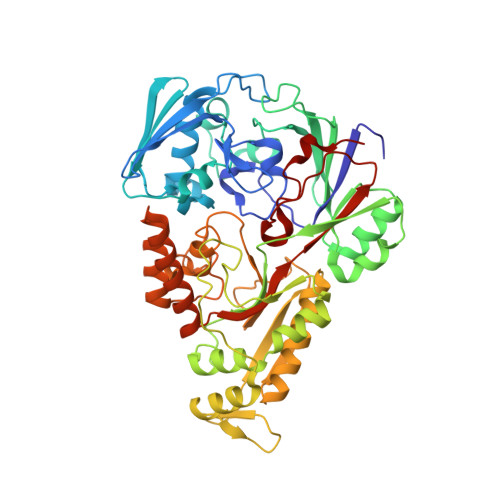Promiscuous nickel import in human pathogens: structure, thermodynamics, and evolution of extracytoplasmic nickel-binding proteins.
Lebrette, H., Brochier-Armanet, C., Zambelli, B., de Reuse, H., Borezee-Durant, E., Ciurli, S., Cavazza, C.(2014) Structure 22: 1421-1432
- PubMed: 25199691
- DOI: https://doi.org/10.1016/j.str.2014.07.012
- Primary Citation of Related Structures:
4OER, 4OES, 4OET, 4OEU, 4OEV, 4OFL, 4OFO - PubMed Abstract:
In human pathogenic bacteria, nickel is required for the activation of two enzymes, urease and [NiFe]-hydrogenase, necessary for host infection. Acquisition of Ni(II) is mediated by either permeases or ABC-importers, the latter including a subclass that involves an extracytoplasmic nickel-binding protein, Ni-BP. This study reports on the structure of three Ni-BPs from a diversity of human pathogens and on the existence of three new nickel-binding motifs. These are different from that previously described for Escherichia coli Ni-BP NikA, known to bind nickel via a nickelophore, and indicate a variegated ligand selectivity for Ni-BPs. The structures are consistent with ligand affinities measured in solution by calorimetry and challenge the hypothesis of a general requirement of nickelophores for nickel uptake by canonical ABC importers. Phylogenetic analyses showed that Ni-BPs have different evolutionary origins and emerged independently from peptide-binding proteins, possibly explaining the promiscuous behavior of this class of Ni(II) carriers.
Organizational Affiliation:
University Grenoble Alpes, Institut de Biologie Structurale (IBS), 38044 Grenoble, France; CNRS, IBS, 38044 Grenoble, France; CEA, IBS, 38044 Grenoble, France.



















